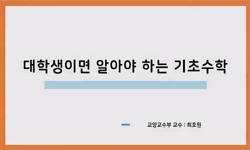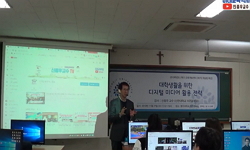본 연구는 한국 문화를 반영한 대학생 사회불안 척도를 개발하여 척도의 신뢰도와 타당도를 검증하는 데 목적이 있다. 전국 대학생을 대상으로 예비 연구(n=495)를 실시하여 사회불안의 구성...
http://chineseinput.net/에서 pinyin(병음)방식으로 중국어를 변환할 수 있습니다.
변환된 중국어를 복사하여 사용하시면 됩니다.
- 中文 을 입력하시려면 zhongwen을 입력하시고 space를누르시면됩니다.
- 北京 을 입력하시려면 beijing을 입력하시고 space를 누르시면 됩니다.
https://www.riss.kr/link?id=A106227542
- 저자
- 발행기관
- 학술지명
- 권호사항
-
발행연도
2019
-
작성언어
Korean
-
주제어
college student ; social anxiety ; performance anxiety ; interpersonal anxiety ; scale ; reliability ; validity ; 대학생 ; 사회불안 ; 수행불안 ; 대인불안 ; 척도 ; 신뢰도 ; 타당도
-
등재정보
KCI등재
-
자료형태
학술저널
-
수록면
645-670(26쪽)
-
KCI 피인용횟수
1
- DOI식별코드
- 제공처
- 소장기관
-
0
상세조회 -
0
다운로드
부가정보
국문 초록 (Abstract)
본 연구는 한국 문화를 반영한 대학생 사회불안 척도를 개발하여 척도의 신뢰도와 타당도를 검증하는 데 목적이 있다. 전국 대학생을 대상으로 예비 연구(n=495)를 실시하여 사회불안의 구성요인을 확인하고, 이어 본 연구(n=881)를 통해 척도의 타당화 분석을 하였다. 절차에 따른 연구 결과는 다음과 같다. 대학생 사회불안 척도(SASCS)는 수행상황 요인(11개 문항으로 공식적 말하기와 공연 포함)과 일상적 사회상황 요인(11개 문항으로 대인 간 상호작용과 타인의 관찰이 있는 가운데 행동하게 되는 비공식적 상황 포함) 2개로 구성되었다. 본 연구 개발 척도에 반영된 대학생 사회불안의 한국 문화적 특성은 수행상황에 두드러진 신체화 반응, 일상적 사회상황에서의 대인 간 온라인 소통 선호와 가해염려형 불안, 어른을 중심으로 한 권위자에 대한 불안 반응 등이다. 이러한 결과를 바탕으로 본 연구에서 개발한 사회불안 척도의 의의와 한계점 및 결과가 갖는 함의를 논의하였다.
다국어 초록 (Multilingual Abstract)
The aim of this study was to develop a social anxiety scale for college students reflective of Korean culture, and to assess its reliability and validity. A nationwide pilot test with college students (n=495) was conducted to identify social anxiety c...
The aim of this study was to develop a social anxiety scale for college students reflective of Korean culture, and to assess its reliability and validity. A nationwide pilot test with college students (n=495) was conducted to identify social anxiety components, followed by the main study (n=881) to validate the scale. The results are as follows: the Social Anxiety Scale for College Students (SASCS) is composed of (1) the performance situations subscale (11 items including public speaking and performance) and (2) the routine social situations subscale (11 items including interpersonal interactions and situations during which one is being observed by others). The Korean cultural characteristics represented in the SASCS include somatic symptoms in performance situations, a preference for online communication, anxiety related to offending others, and anxious responses toward authority figures during routine social situations. Based on the findings, implications, limitations, and directions for future research are discussed.
참고문헌 (Reference)
1 장현갑, "한국형 마음챙김 명상에 기반한 스트레스 감소 프로그램의 개발과 SCL-90-R로 본 효과성 검증" 한국건강심리학회 12 (12): 833-850, 2007
2 홍영근, "한국판-부정적 평가에 대한 두려움 척도Ⅱ 타당화 연구" 한국심리학회 30 (30): 117-134, 2011
3 김소정, "한국판 사회적 상호작용 불안척도(K-SIAS)와 한국판 사회공포증 척도(K-SPS)의 단축형 타당화 연구" 한국인지행동치료학회 13 (13): 511-535, 2013
4 김남재, "한국판 사회공포증과 불안 검사의 타당화 연구" 한국임상심리학회 23 (23): 1011-1028, 2004
5 이정윤, "한국판 사회공포증 척도(K-SAD, K-FNE)의 신뢰도 및 타당도 연구" 16 (16): 251-264, 1997
6 조용래, "한국판 발표불안 사고 검사의 신뢰도와 타당도" 한국임상심리학회 23 (23): 1109-1125, 2004
7 유은승, "한국판 Liebowitz사회불안척도(LSAS)의 요인구조 및 진단적 유용성 -대학생 집단과 사회공포증환자 집단을 중심으로" 한국임상심리학회 26 (26): 251-270, 2007
8 강진화, "한국판 Liebowitz 사회불안 척도: 임상가 평정(Liebowitz Social Anxiety Scale: Clinician Administered)의 타당도 연구" 한국임상심리학회 32 (32): 291-312, 2013
9 박선영, "한국사회 증상으로서의 집단주의와 개인주의: 정신분석적 고찰" 한국현대정신분석학회 18 (18): 40-77, 2016
10 이지은, "페이스북 이용과 대인네트워크 변화에 대한 한․미 문화 간 비교 연구: 자아개념과 자기노출, 대인불안을 중심으로" 사회과학연구소 24 (24): 257-281, 2013
1 장현갑, "한국형 마음챙김 명상에 기반한 스트레스 감소 프로그램의 개발과 SCL-90-R로 본 효과성 검증" 한국건강심리학회 12 (12): 833-850, 2007
2 홍영근, "한국판-부정적 평가에 대한 두려움 척도Ⅱ 타당화 연구" 한국심리학회 30 (30): 117-134, 2011
3 김소정, "한국판 사회적 상호작용 불안척도(K-SIAS)와 한국판 사회공포증 척도(K-SPS)의 단축형 타당화 연구" 한국인지행동치료학회 13 (13): 511-535, 2013
4 김남재, "한국판 사회공포증과 불안 검사의 타당화 연구" 한국임상심리학회 23 (23): 1011-1028, 2004
5 이정윤, "한국판 사회공포증 척도(K-SAD, K-FNE)의 신뢰도 및 타당도 연구" 16 (16): 251-264, 1997
6 조용래, "한국판 발표불안 사고 검사의 신뢰도와 타당도" 한국임상심리학회 23 (23): 1109-1125, 2004
7 유은승, "한국판 Liebowitz사회불안척도(LSAS)의 요인구조 및 진단적 유용성 -대학생 집단과 사회공포증환자 집단을 중심으로" 한국임상심리학회 26 (26): 251-270, 2007
8 강진화, "한국판 Liebowitz 사회불안 척도: 임상가 평정(Liebowitz Social Anxiety Scale: Clinician Administered)의 타당도 연구" 한국임상심리학회 32 (32): 291-312, 2013
9 박선영, "한국사회 증상으로서의 집단주의와 개인주의: 정신분석적 고찰" 한국현대정신분석학회 18 (18): 40-77, 2016
10 이지은, "페이스북 이용과 대인네트워크 변화에 대한 한․미 문화 간 비교 연구: 자아개념과 자기노출, 대인불안을 중심으로" 사회과학연구소 24 (24): 257-281, 2013
11 보건복지부, "정신질환실태역학조사 최종보고서"
12 허재홍, "자율신경계 신체반응, 인지과정이 사회불안에 미치는 영향" 한국상담심리학회 17 (17): 983-1002, 2005
13 송인섭, "자아개념" 학지사 2013
14 권석만, "임상심리학에서의 비교문화적 연구" 1 : 105-133, 1996
15 이정화, "외로움이 SNS 중독 경향성에 미치는 영향: 성별에 따른 대인관계 지향성의 조절 효과" 한국임상심리학회 36 (36): 154-164, 2017
16 고은영, "외로움, 대인 민감 및 페이스북 중독 간의 관계" 한국상담심리학회 26 (26): 713-736, 2014
17 탁진국, "심리검사" 학지사 2009
18 신혜린, "사회적 불안 상황을 중심으로 한 사회불안 하위 유형의 불안 반응 차이 연구" 연세대학교 대학원 2012
19 김현수, "사회불안장애의 근거기반치료" 한국임상심리학회 36 (36): 470-493, 2017
20 김은정, "사회불안장애" 학지사 2016
21 노승혜, "사회불안 유형이 우울에 미치는 영향: 고통 감내력과 회피대처의 매개효과" 한국상담심리학회 29 (29): 429-449, 2017
22 엄명용, "사회복지실천과 척도 개발 : 표준화된 척도를 중심으로" 학지사 2005
23 홍영근, "사회공포증과 불안검사-14(SPAI-14) 개발 및 타당화 연구" 한국정서행동장애학회 30 (30): 227-245, 2014
24 Capps, D., "사회공포증: 만남의 두려움에서 벗어나기" 엘도론 2015
25 박기환, "사회공포증 하위유형에 따른 임상적 특징 및 치료효과 비교" 한국임상심리학회 26 (26): 93-106, 2007
26 김향숙, "사회공포증 하위 유형의 기억 편향" 서울대학교 대학원 2001
27 강지연, "사무직 여성의 직무스트레스와 부정적 정서가 신체화에 미치는 영향: 포커싱적 태도의 매개효과" 한국여성심리학회 19 (19): 31-54, 2014
28 이봉건, "바이오피드백이 가미된 이완 및 호흡조절에 의한 스트레스 감소: 사례연구" 한국임상심리학회 25 (25): 603-622, 2006
29 강재연, "마음챙김-자기자비 집단프로그램의 효과: 자기비판 성향을 지닌 대학생을 대상으로" 한국상담심리학회 29 (29): 335-356, 2017
30 문혜신, "또래의 괴롭힘이 청소년기 사회 불안에 영향을 미치는 기제" 연세대학교 대학원 2001
31 김남재, "대인불안의 측정에 대한 연구" 14 (14): 73-81, 1995
32 조용래, "대인불안에 대한 인지적 평가(Ⅱ)" 16 (16): 233-249, 1997
33 김윤희, "공감척도 개발 및 타당화" 경북대학교 2017
34 송지연, "가해염려형 사회불안에 영향을 미치는 사회문화적 변인 : 체면, 눈치, 문화적 자기관을 중심으로" 한국건강심리학회 14 (14): 329-343, 2009
35 조용래, "가해염려를 동반한 사회공포증: 한국판 TKS의 신뢰도와 타당도" 한국임상심리학회 24 (24): 397-412, 2005
36 Tabachnick, B. G., "Using multivariate statistics" Pearson Education 2001
37 LeDoux, J., "The emotional brain: The mysterious underpinnings of emotional life" Simon & Schuster 1996
38 Cho, Y., "The Speech Anxiety Thoughts Inventory: Scale development and preliminary psychometric data" 42 (42): 13-25, 2004
39 Turner, S. M., "The Social Phobia and Anxiety Inventory: Construct validity" 11 (11): 221-234, 1989
40 Vente, W. D., "The SPAI-18, a brief version of the Social Phobia and Anxiety Inventory: Reliability and validity in clinically referred and non-referred samples" 28 (28): 140-147, 2014
41 Walker, J. R., "The Manitoba IBD cohort study: A population-based study of the prevalence of lifetime and 12-month anxiety and mood disorders" 103 (103): 1989-1998, 2008
42 Vriends, N., "Subtypes of social phobia: Are they of any use?" 21 : 59-75, 2006
43 Clark, D. M., "Social phobia: Diagnosis, assessment, and treatment" The Guilford Press 69-93, 1995
44 Leary, M. R., "Social phobia: Diagnosis, assessment, and treatment" Guilford Press 94-112, 1995
45 Rapee, R. M., "Social phobia features across the DSM-III-R anxiety disorders" 10 (10): 287-299, 1988
46 Liebowitz, M. R., "Social phobia" 22 : 141-173, 1987
47 Ruscio, A. M., "Social fears and social phobia in the USA: Results from the National Comorbidity Survey Replication" 38 : 15-28, 2008
48 Leary, M. R., "Social anxiousness: The construct and its measurement" 47 (47): 66-75, 1983
49 High, A. C., "Social anxiety and computer-mediated communication during initial interactions: Implications for the hyperpersonal perspective" 25 (25): 475-482, 2009
50 Carleton, R. N., "Refining and validating the Social Interaction Anxiety Scale and the Social Phobia Scale" 26 : 71-81, 2009
51 Beidel, D. C., "Physiological, cognitive and behavioral aspects of social anxiety" 23 : 107-119, 1985
52 Norton, G. R., "Personality factors associated with generalized and non-generalized social anxiety" 22 (22): 655-660, 1997
53 Hair, J. F., "Multivariate data analysis" Pearson Education 2006
54 Watson, D., "Measurement of social-evaluative anxiety" 33 (33): 448-457, 1969
55 McCoach, D. B., "Instrument development in the affective domain" Springer 2013
56 Perry, A., "Don't stand so close to me: A behavioral and ERP study of preferred interpersonal distance" 83 : 761-769, 2013
57 American Psychiatric Association, "Diagnostic and statistical manual of mental disorders" American Psychiatric Publishing 2013
58 American Psychiatric Association, "Diagnostic and statistical manual of mental disorders" American Psychiatric Publishing 1994
59 Mattick, R. P., "Development and validation of measures of social phobia scrutiny fear and social interaction anxiety" 36 (36): 455-470, 1998
60 Kleinknecht, E. E., "Cultural factors in social anxiety: A comparison of social phobia symptoms and taijin kyofusho" 11 (11): 157-177, 1997
61 Glass, C. R., "Cognitive assessment of social anxiety: Development and validation of a self-statement questionnaire" 6 (6): 37-55, 1982
62 송지준, "Amos 통계분석방법" 21세기사 2009
63 Browne, M. W., "Alternative ways of assessing model fit" 21 (21): 230-258, 1992
64 Kline, P., "A handbook of test construction: Introduction to psychometric design" Routledge 1986
65 Oakman, J., "A confirmatory factor analysis of a self-report version of the Liebowitz Social Anxiety Scale" 59 (59): 149-161, 2003
동일학술지(권/호) 다른 논문
-
- 한국상담심리학회
- 이정숙
- 2019
- KCI등재
-
트라우마 사건을 경험한 성인의 낙관성, 대처 방식, 외상 후 성장, PTSD 증상, 음주 문제 간의 구조적 관계
- 한국상담심리학회
- 이수연
- 2019
- KCI등재
-
지각된 불공정성과 자살위험의 관계에서 우울을 통한 긍정적 대인관계의 조절된 매개효과: 성별 분석
- 한국상담심리학회
- 양은정
- 2019
- KCI등재
-
기업상담자가 경험한 비밀보장 문제: 윤리적 갈등과 의사결정
- 한국상담심리학회
- 이은정
- 2019
- KCI등재
분석정보
인용정보 인용지수 설명보기
학술지 이력
| 연월일 | 이력구분 | 이력상세 | 등재구분 |
|---|---|---|---|
| 2026 | 평가예정 | 재인증평가 신청대상 (재인증) | |
| 2020-01-01 | 평가 | 등재학술지 유지 (재인증) |  |
| 2017-01-01 | 평가 | 등재학술지 유지 (계속평가) |  |
| 2013-01-01 | 평가 | 등재학술지 유지 (등재유지) |  |
| 2010-01-01 | 평가 | 등재학술지 유지 (등재유지) |  |
| 2008-01-01 | 평가 | 등재학술지 유지 (등재유지) |  |
| 2006-06-07 | 학술지등록 | 한글명 : 한국심리학회지: 상담 및 심리치료외국어명 : Korean Journal Of Counseling And Psychotherapy |  |
| 2006-01-01 | 평가 | 등재학술지 유지 (등재유지) |  |
| 2003-01-01 | 평가 | 등재학술지 선정 (등재후보2차) |  |
| 2002-01-01 | 평가 | 등재후보 1차 PASS (등재후보1차) |  |
| 2000-07-01 | 평가 | 등재후보학술지 선정 (신규평가) |  |
학술지 인용정보
| 기준연도 | WOS-KCI 통합IF(2년) | KCIF(2년) | KCIF(3년) |
|---|---|---|---|
| 2016 | 2.32 | 2.32 | 2.3 |
| KCIF(4년) | KCIF(5년) | 중심성지수(3년) | 즉시성지수 |
| 2.39 | 2.58 | 3.685 | 0.35 |




 KCI
KCI







